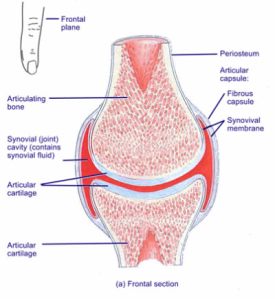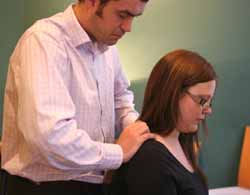Does dentistry work? Does medicine? Does chiropractic? The answer is impossible to give because these three are professions not treatments. One can ask, does filling teeth prevent further cavities or does heart surgery prolong life or does manipulation improve back pain but you cannot ask a simple question of the whole complex profession.
Chiropractic is often described as a package of care consisting of manipulation or mobilisation techniques, exercise prescription, ergonomic and lifestyle advice as well as general health and wellness advice. Often our role overlaps with counselling as we talk with someone about losing a job, stress management or relationship issues. All of these can, of course, have an impact on general health and even back pain.
Many studies have looked at how to predict who will get back pain and who won’t. Unfortunately most research doesn’t come up with a worthwhile answer except in one area – psychology. Asking someone if they like their job or if they like their spouse or partner is quite useful to predict who is more likely to get back pain. If someone answers no to either question then they are more likely to get back pain than someone who answers yes. So counselling is an important if more amateur part of a chiropractors job than seeing a trained psychotherapist. We often refer people to psychotherapist if a brief chat is not really going to be enough.
You can ask does the package of care compare well to another package of care. This is what the the Medical Research Council asked in 1990. They found that chiropractic care was 70% more effective than conventional medical care in the treatment of back pain. It was a pragmatic study, that is, all the chiropractors, doctors and physio’s were allowed to do whatever treatment they would normally do. Of course the physio’s hated the results and criticised the study heavily.
In a repeated study the professional rivalries were reduced by looking at the treatment interventions themselves, especially manipulation and exercise compared to drug therapy. The BEAM trial in 2005 showed that for back pain exercise is good, manipulation is better and that manipulation and exercise is best. Drug therapy did not do so well.
This was a good lesson for chiropractic or more particularly for chiropractors themselves. It meant that we cannot own a particular treatment modality, in this case – manipulation. Physio’s and osteopaths were also involved in the trial and showed they they had skill in manipulative care too.
As the market place for spinal care gets more crowded some chiropractors have sought to distinguish what they do from other health providers by stating their belief in the value of treating the vertebral subluxation complex. The origins of this rather archaic and vague term dates back to the inception of chiropractic as a profession in the 1800’s and has different meanings in medicine. Most chiropractors registered with the British Chiropractic Association prefer to describe the spinal problems that we treat in terms of biomechanical and neurological dysfunction that any medical doctor would understand. It is the same problem described differently.
Another difference is between mainstream chiropractors and the ones from the past is the the concept of disease being caused by these subluxations. Whilst there is some interesting evidence, we are a long way off being able to show that treating spinal dysfunction will help with health and disease in general. A comparison can be found with old fashioned ideas of the causes of disease in medicine in general. Until the nineteenth century the concept of the four humours of black bile (melankholia), yellow bile (cholera), phlegm (phlegma), and blood (sanguis) as the cause of all ill-health was widespread. Conventional medicine dropped these concepts as more became known. Interestingly cholera survived as a description of a different entity.
If chiropractic is to fulfill its role as the specialist provider of non-surgical spine care, working alongside mainstream health care we will have to resolve this dichotomy and explain our role as a profession not just a treatment. We will have to use universally understood terminology and apply evidence informed care for the best interest of our patients.



 So it’s official – superstar rock singers can get back pain too. Bono, the lead singer with U2, has pulled out of headlining at Glastonbury citing a bad back as the reason. It seems that oodles of cash, leather trousers and groovy sunglasses are no protection form this common affliction.
So it’s official – superstar rock singers can get back pain too. Bono, the lead singer with U2, has pulled out of headlining at Glastonbury citing a bad back as the reason. It seems that oodles of cash, leather trousers and groovy sunglasses are no protection form this common affliction. 



 I hate to be a killjoy but there is another danger to add the list of health and safety concerns about fireworks. Yesterday two people came to see me complaining of neck pain after watching firework displays the night before. They had obviously spent an hour or so looking up to the watery heavens and awoke the next morning in considerable pain.
I hate to be a killjoy but there is another danger to add the list of health and safety concerns about fireworks. Yesterday two people came to see me complaining of neck pain after watching firework displays the night before. They had obviously spent an hour or so looking up to the watery heavens and awoke the next morning in considerable pain.


